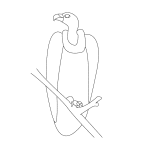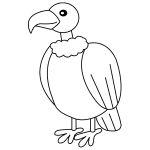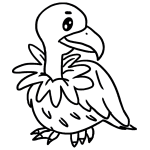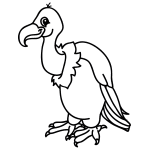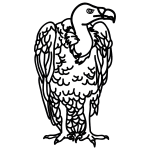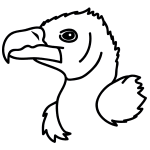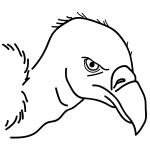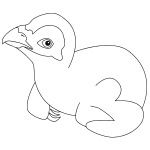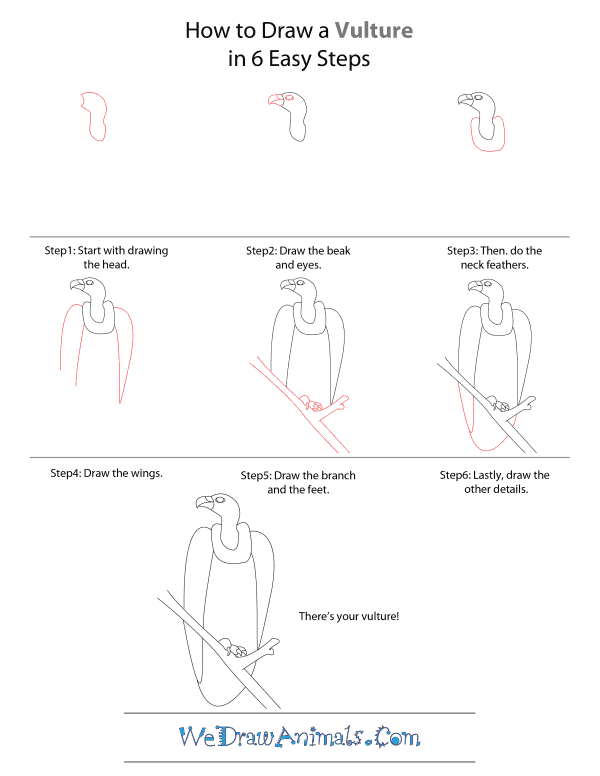In this quick tutorial you'll learn how to draw a Vulture in 6 easy steps - great for kids and novice artists.
The images above represent how your finished drawing is going to look and the steps involved.
Below are the individual steps - you can click on each one for a High Resolution printable PDF version.
At the bottom you can read some interesting facts about the Vulture.
Make sure you also check out any of the hundreds of drawing tutorials grouped by category.
How to Draw a Vulture - Step-by-Step Tutorial
Step 1: Let's start by drawing the vulture's head. Draw in a curve on the left side--this is where you will put the beak.
Step 2: Starting at the curve, draw the beak. Add a little detail on the top half of the beak with a line going down the middle. Also draw the vulture’s eye. Did you know? Vultures have very good vision in the daylight, but bad vision at night.
Step 3: Next, draw the neck feathers. If you’re having trouble, think of drawing a large circle around the neck. Pretend your vulture is wearing a scarf!
Step 4: Now draw the wings, extending from the neck all the way to the bottom of the body. Vultures have a six-foot wingspan. This allows them to soar when they fly, which uses less energy than flapping their wings.
Step 5: Draw the branch and the feet. The branch comes down at an angle, and the vulture rests its very sharp claws on it.
Step 6: Your last step is to draw the last few details. Finish the vulture’s wing by bringing it down to a point at the bottom. Then draw a long curved line at the bottom of the body for the tail. Your vulture is now finished!
Interesting Facts about Vultures
Vultures are large brown birds with bald heads. There are 22 species of vultures that are grouped into two categories: New World and Old World. The New World vultures live in North and South America. The Old World vultures inhabit Europe, Asia, and Africa.
Did you know?
- The vulture’s average wingspan is about 6 feet wide. Their large wingspan helps them soar long periods of time without having to flap their wings, and so they do not get tired easily.
- Vultures do not have a voice box like other birds that like to sing or “talk” like humans. To communicate with each other, they make hissing sounds.
- Vultures are also called buzzards.
- Vultures have great eyesight, except in the dark.
- The average size of a vulture is between 24 and 55 inches. They can weigh as much as 25 pounds.
- Vultures vomit, and then fly away, as a defense mechanism against predators.
- Vultures urinate on themselves to kill germs.
The word “vulture” comes from the French word that means “to tear.” They are known for preying on carcasses (bodies of dead animals), and tearing them apart as they eat, which is how they got their name.

